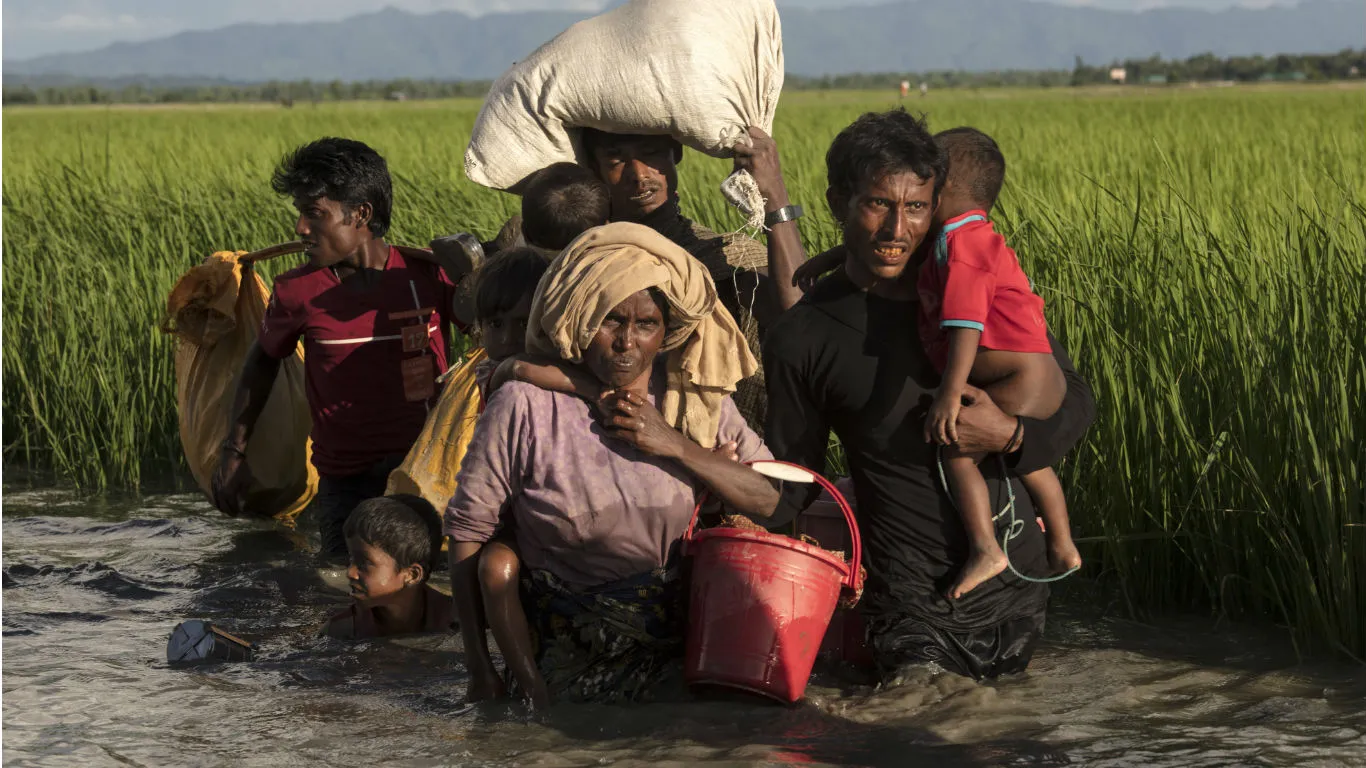
Climate scientists have warned that immediate and substantial action is necessary to cut greenhouse gas emissions in half by 2030 in order to limit global warming to 1.5 degrees Celsius (2.7 Fahrenheit) above pre-industrial levels. This goal was hammered out at the 2015 U.N. Climate Change Conference in Paris.
“Without increased and urgent mitigation ambition in the coming years, leading to a sharp decline in greenhouse gas emissions by 2030, global warming will surpass 1.5 C in the following decades, leading to irreversible loss of the most fragile ecosystems, and crisis after crisis for the most vulnerable people and societies,” the IPCC said in a special report in 2019.
Indeed, the punishing effects of global warming will not be dished out equally. To identify the counties most vulnerable to climate change, 24/7 Wall St. reviewed the Notre Dame Global Adaptation Initiative that measures the vulnerability to climate change and readiness of 182 different countries. Countries are ranked by their overall index score, which itself consists of a vulnerability index and a readiness index.
The vulnerability index “measures a country’s exposure, sensitivity and capacity to adapt to the negative effects of climate change,” considering indicators in six life-supporting sectors: food, water, health, ecosystem service, human habitat, and infrastructure. The readiness index “measures a country’s ability to leverage investments and convert them to adaptation actions” and considers different indicators in three components: economic readiness, governance readiness, and social readiness.
We also added GDP per capita and total population from the World Bank World Development Indicators for 2020. Ties were broken by GDP per capita.
The countries most vulnerable to climate change, including Bangladesh, Ethiopia, and Myanmar, are the ones least responsible for global warming. Meanwhile countries like Germany, Japan, and the United States that have economically prospered partly by releasing greenhouse gasses are far better prepared and developed to mitigate the effects of global warming.
For example, the United States recently committed to spending $369 billion on a climate plan that aims to reduce carbon emissions through a series of incentives that would promote clean energy, improve energy efficiency in housing, and provide tax credits for the purchase of electric cars and energy efficient appliances. (Earth’s CO2 level rose every year since climate change became a national issue.)
But the 30 countries most vulnerable to global warming lack the economic resources to dish out tax breaks for electric cars and green home appliances. These impoverished countries are home to more than a billion people, many of them living off subsistence-level, rain-fed agriculture in states wreaked with political instability and poor public infrastructure.
Twenty-three of these countries are African nations dispersed across the continent, including in arid North Africa and in the world’s second-largest rainforest of Central African. The tiny Caribbean country of Haiti is the most vulnerable in the Western Hemisphere. (These are the worst cities to live as climate change gets worse.)
Rising temperatures and rising sea levels, increased variability in precipitation, and increased risk of droughts and floods are the biggest threats from climate change. They will exacerbate existing problems, such as soil erosion caused by deforestation, salt water intrusion into freshwater aquifers, and food insecurity.
Paradoxically, global warming is causing both floods and droughts as higher temperatures suck up more water from the surface into the atmosphere, causing changes to global weather patterns that billions of people rely on for food production.





